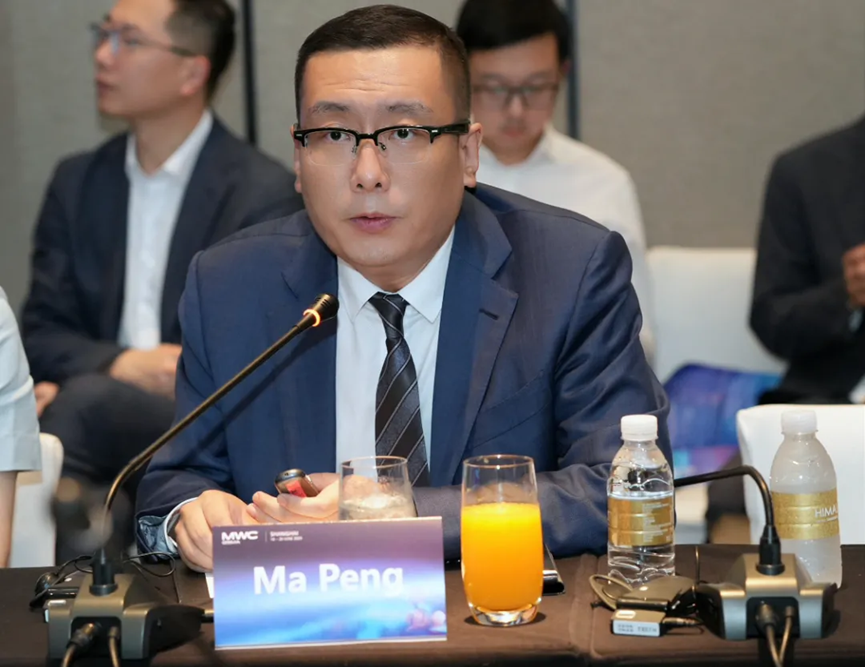On June 19, the 5G New Calling Industry Development Roundtable took place successfully during MWC Shanghai 2025. It was organized by the GSMA 5G New Calling Task Force, and supported by China Mobile. During the event, Ma Peng, President of the CS&IMS Domain of Huawei Cloud Core Network Product Line, delivered a keynote speech titled "From New Calling to AI Calling, Seize the Entry of AI Service." He emphasized that Huawei has introduced its AI Calling solution for the 5G-A era, marking a shift in voice services from AI-powered to AI-native. This solution empowers operators to transform the dial pad into an entry for AI services, advancing communication towards greater intelligence and personalization. By providing new value to users, it sets the stage for business growth and success in the AI era.

New Calling Industry: From Large-Scale Development in China to Global Adoption
The user base has exceeded 50 million since China Mobile launched its New Calling services at the end of 2023, with over 20 smartphone models now supporting interactive calling via the Data Channel (DC). By the end of this year, the number of DC-capable device users is expected to reach 20 million. Globally, Huawei is partnering with operators in the Middle East, Asia Pacific, and Latin America to roll out a range of New Calling services, including simultaneous interpretation, AI-generated digital avatars, and intelligent enterprise customer service. These innovations are delivering personalized and intelligent communication experiences, marking the global expansion of New Calling beyond its large-scale adoption in China.
Ma Peng highlighted three key challenges in evolving voice services — from voice-only to content-based operations, and ultimately to an AI service entry: building strong AI capabilities, ensuring a consistent user experience across different locations and networks, and fostering a healthy industry ecosystem.
From New Calling to AI Calling: Building a Service Entry for Operators in the AI Era
Huawei has unveiled its AI Calling solution to help operators establish a foothold in the AI era, following a two-phase roadmap. In the AI-powered phase, AI calling assistants are introduced to enhance existing services — such as harassment call blocking, smart secretary answering, and automatic call summarization — before, during, and after calls, significantly improving the user experience. In the AI-native phase, the goal is to develop AI general assistants capable of handling complex tasks through multi-modal perception, intent understanding, long short-term memory, and task orchestration. Ma Peng emphasized, "Our aim is to provide one number per app and one assistant per user — to deliver intelligent, personalized communication and to unlock new value for users."
Network Construction: Championing an Equal User Experience in the AI Era
Ma Peng noted that VoLTE adoption remains uneven across the globe, and legacy 2G and 3G networks will continue to coexist with 4G and 5G for the foreseeable future. He stressed that user experiences should not be constrained by region or network conditions. For example, if a VoLTE subscriber using real-time translation enters an underground parking lot and switches to a 2G or 3G network, the service should continue seamlessly without interruption. To achieve this, the New Calling platform must support multi-RAT access, for consistent service experiences regardless of location or network environment. Moreover, New Calling services need to function and maintain quality across different operators and international borders. By meeting these requirements, the industry can realize the vision of "all-scenario availability and universal user access," ultimately providing a truly equal user experience in the AI era.
Open Architecture: Promoting a Thriving Industry Ecosystem
A vibrant content and application ecosystem, along with an agile and open network architecture, is crucial for unlocking the full potential of AI. The network must adopt an open architecture with standard APIs that seamlessly connect to a variety of content sources, including professionally-generated content (PGC), user-generated content (UGC), and AI-generated content (AIGC), to keep content fresh.
Huawei's AI Calling solution features a network-service-decoupled architecture, allowing flexible integration with both individual and vertical industry applications. This decoupling supports rapid application iteration and innovation while ensuring robust network stability and reliability, driving ecosystem growth. Additionally, the unified plug-in framework improves architectural agility, allowing for the flexible addition of third-party agents, media processing tools, and functionalplug-ins. This meaningfully shortens the time-to-market for new services, and accelerates ecosystem expansion.
As AI technology is rapidly advancing, Ma Peng urged industry partners to collaborate in establishing a strong New Calling foundation, embrace open architecture, and progress from New Calling to AI Calling. This collaboration will create a seamless entry for AI services, driving mutual success in the era of AI.

